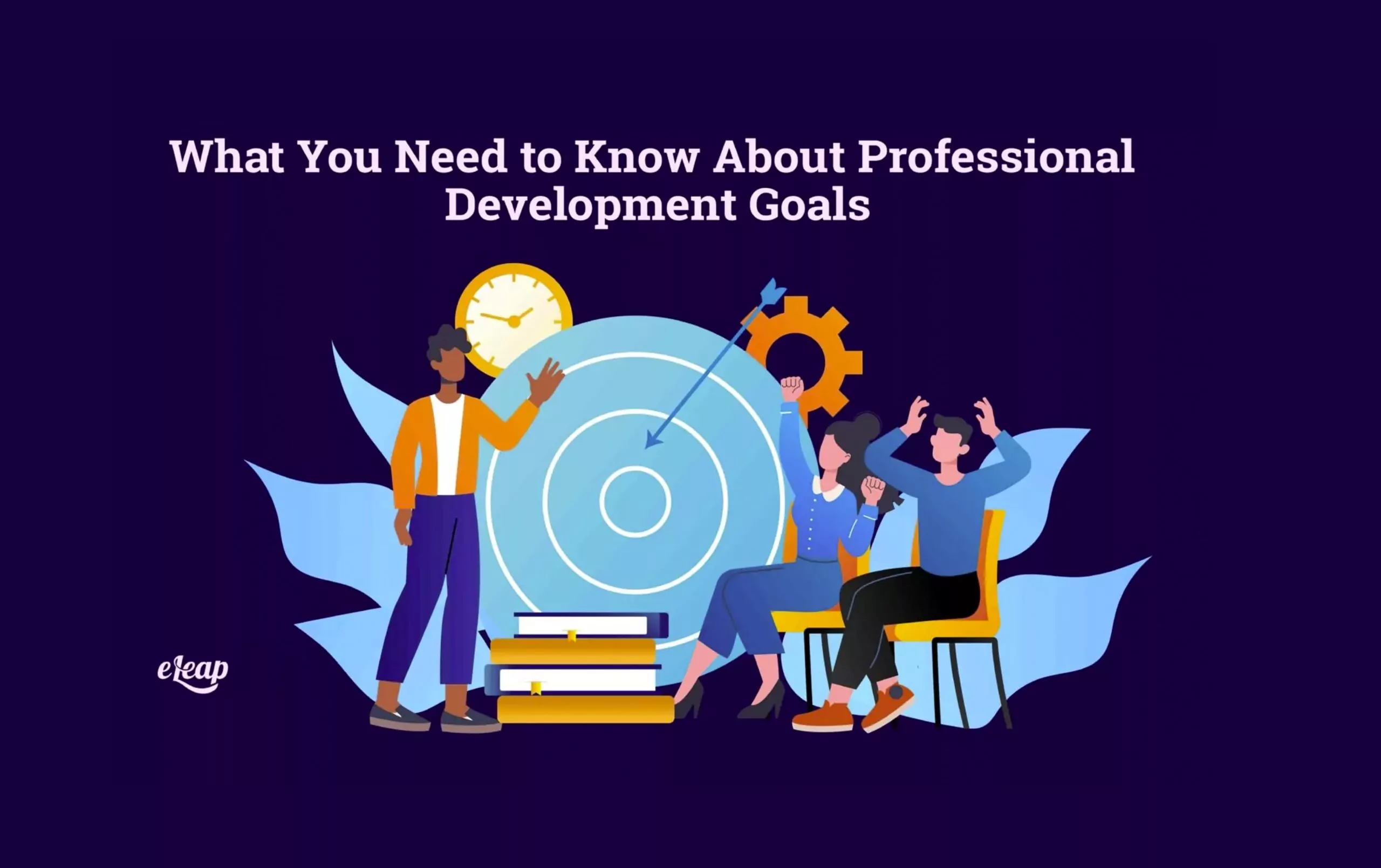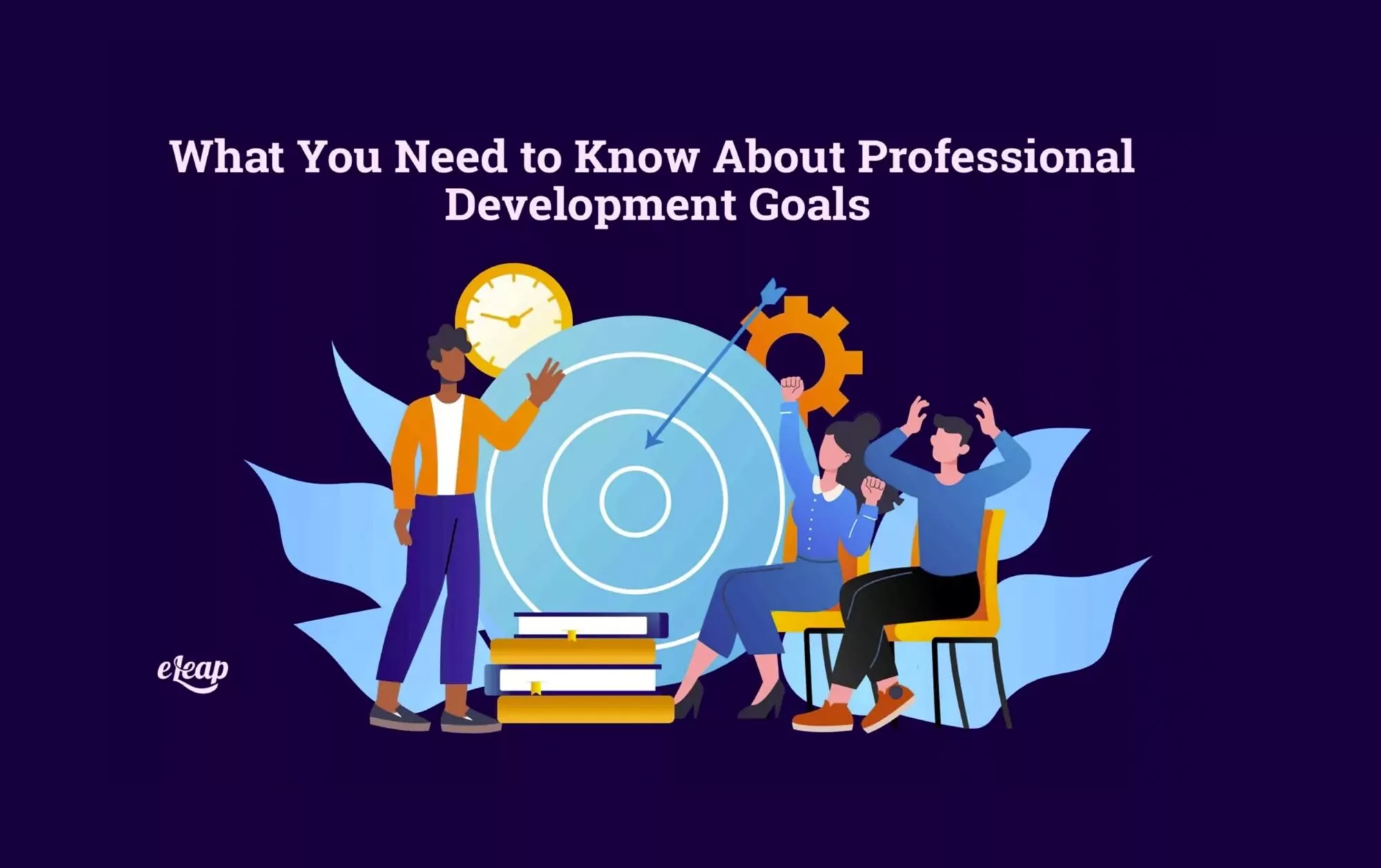What You Need to Know About Professional Development Goals

Naturally, you want your team to thrive, just as you want the rest of the organization to succeed, and professional development goals will help. However, you also have to stop a moment and think about what success means to you and your employees. What is it that you want to achieve? It can’t be some ephemeral idea. It needs to be solid and defined. Everyone at the company needs to know what success is and how it is defined. Having a strong working relationship with the employees is important. You want to help to set professional development goals that support their success as a team and as individual employees.

While all of this sounds great, it is sometimes harder to do in actuality. If you aren’t familiar with how to set professional development goals, it could be a problem. Sometimes, it’s hard to create detailed goals or to ensure the goals align with what the company needs and what the employee wants from their career. The goal of professional development is to help your employees to reach their potential—and keep them happy and working at your company at the same time.
What Are Professional Development Goals?
These are typically individual goals that someone wants to achieve. The goal might be to help improve an employee’s performance in a role they are currently fulfilling, or it could be for a role they want to have that will advance their career. Having clearly defined goals will help to determine specific actions for the employees to take. They can also help to better align the organization and the employee.
When a business strives to have employees who reach their professional goals, it’s good for everyone. The employees have the benefit of learning more and growing in their skill levels and experience. They become focused on behaviors and skills that will help them to be more successful. The business benefits, too, because it means there are more employees who are highly skilled working at the company toward the same organizational goals.
One of the other reasons employees tend to appreciate professional development goals is that they can help employees figure out what they want to do next. It can give them a decent look at how their careers can progress. With many employees, this leads to a higher level of engagement, which is nice for both them and the organization.
When an employee doesn’t feel as though they have any way of advancing in their job, they are going to get bored, and they won’t feel as engaged. Having goals in place can help them to better map out their career going forward. They will appreciate being able to learn and train and improve their skills or even train in other areas where they might advance. Companies that can keep their employees engaged are more likely to keep their employees overall. There tends to be less turnover when the employee sees room for growth.
What Do Many Goals for Professional Development Have in Common?
Professional development goals have the potential to be effective, but they need to be crafted well for the employees to want to follow them and reach the goals. Typically, whenever you are creating a goal, you want to keep the acronym SMART in mind. This breaks down into Specific, Measurable, Achievable, Relevant, and Time-Bound.
When you have a goal that meets the SMART criteria, you will find that it tends to be much easier to achieve, as it makes things nice and clear. You can and should also have accountability for those goals. Something else to keep in mind when creating these goals is that they should be written in a way to help motivate the employee.
The professional development goals should be detailed, too. Although you might have an overarching goal, you don’t want it to be too vague. Improving graphic design skills is a big umbrella goal, but it’s not specific. You will want to dig in and create smaller, actionable steps that are more detailed about a specific program that you want to learn or skills in that program.
Keep the SMART acronym in mind when crafting your goals, and you will be fine. You will also be happy to note that this system will work for more than just professional development goals—it works for any sort of objectives.
Helping the Employees with Professional Development
The information above will help you get a better idea of what these types of goals are, why they are important, and how to create them. However, as a supervisor or manager, you want to know how to help your employees create and reach the professional development goals that are right for their careers. Let’s look at a few tips that could help.
Provide Some Clarity
Sometimes, the employees will have a good idea of what they want when it comes to professional development. They already have a set of goals that they want to accomplish. However, that doesn’t apply to everyone. Often, there will be those who need a little bit more help and guidance along the way.
If you have an employee that might not be entirely clear on what they should do when it comes to professional development and how they want to grow, you can help them find it. You’ll want to have a conversation with the employee about what they want out of the job and the career. Are they looking to branch out and learn other things? Do they want to follow the same trajectory they are on right now?
Meet with the employee and talk with them about what they might want to do and what being better at their jobs would entail. What types of skills would they need to increase? Then, you can start looking into different types of training that might help them to achieve those goals. Work with them to create goals. Don’t just tell them what their goals should be.
Additionally, it is important to understand why the employee wants to achieve certain goals. What is it that they ultimately want to achieve and where do they see themselves in a few years’ time? You want the employees to be engaged and motivated throughout the process.
Create Your Plan
Helping employees to set goals is just one part of the equation. If you want them to succeed and follow through, you will also want to work with the employee to create a plan. The plan takes the goal and breaks it down into smaller, actionable steps that can then be taken to reach that goal.
You need to treat goals as elements that have to be broken down and defined. You want your employees to have large goals that can help them with their careers. However, if a goal is too large or complicated, what happens? Most of the time, it means that the employee is going to give up on the goal sooner rather than later. It could even lead to burnout.
Instead, the best course of action is to take the professional development goals and break them down further. Make them smaller so they are easier to achieve. If you find that making the goals smaller still results in them being too big and difficult to achieve, break them down again.
The exact steps, of course, will differ from one person and goal to the next. However, the idea is the same. Writing down not just the goals but the specific activities that allow people to reach those goals will help to ensure the plan is more likely to be completed.
Track the Progress
In addition to breaking those large goals down into smaller goals, you will always want to be sure you are tracking the progress. When you have smaller goals, there will be more to track, but you will feel as though you are doing a lot because you can continually tick off those goals that you reach. When someone sees they are making progress, they are more likely to stick with it.
You Might Need to Adapt
Just because you set a professional development goal doesn’t mean that it’s set in stone and that an employee will follow through. Sometimes, there are changes that happen in the workplace or in an employee’s personal life that require some changes to be made. Things change, and you need to be flexible enough to roll with the changes.
Start Building Professional Development Goals with Your Team
Working with your team members to create these goals is going to make a difference in how connected they feel to the goals. Simply telling them what to do or the courses to take is not going to be as beneficial as becoming actively involved with them and learning more about who they are and what they want from their career. Work on the goals and the plan together and follow up with the employee regularly to see how things are coming.